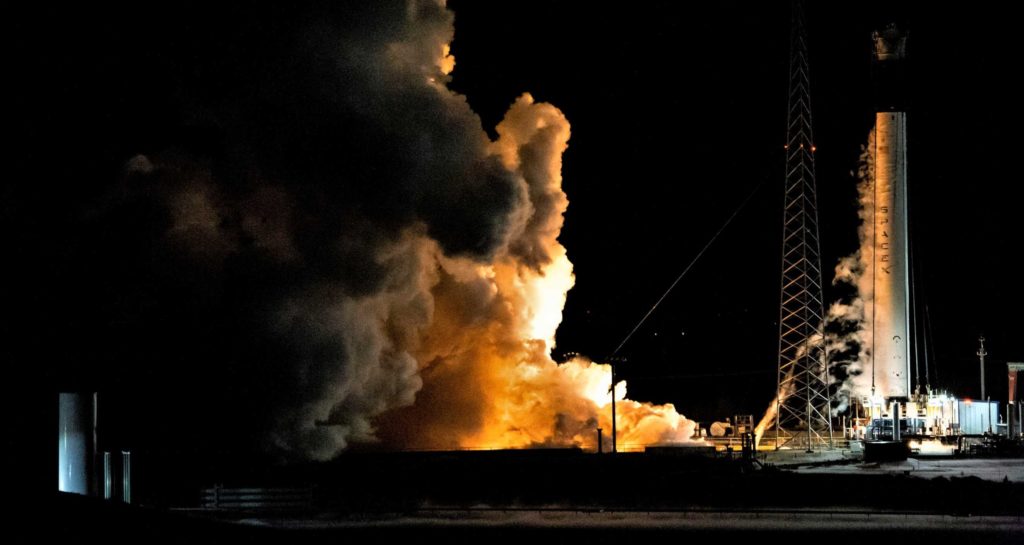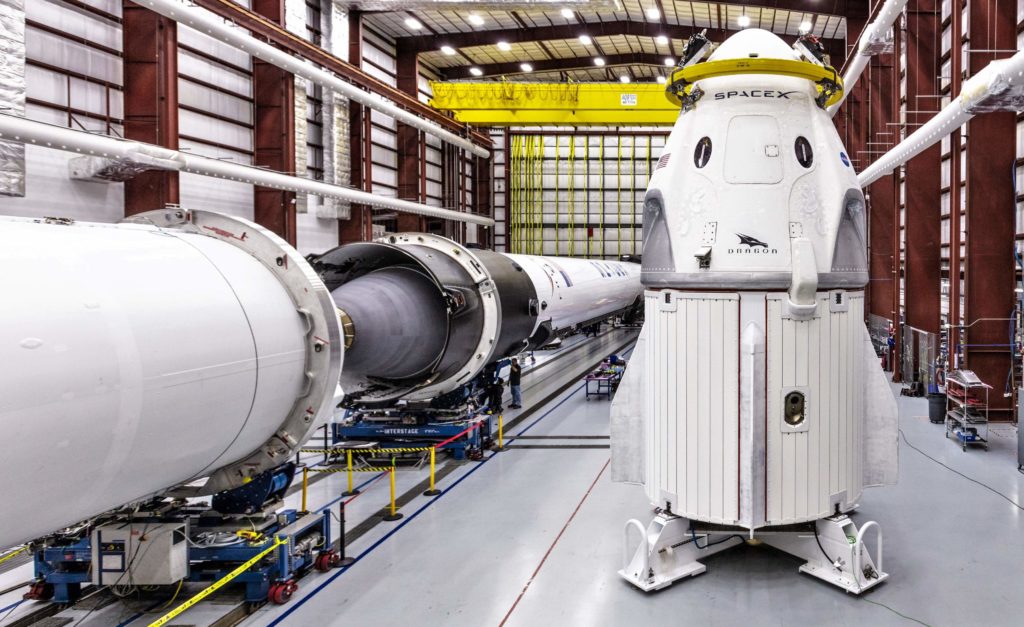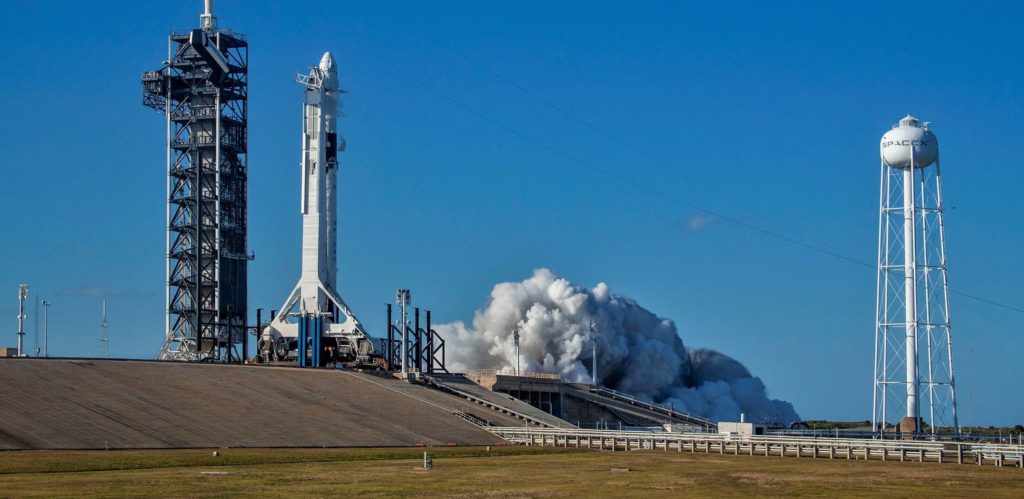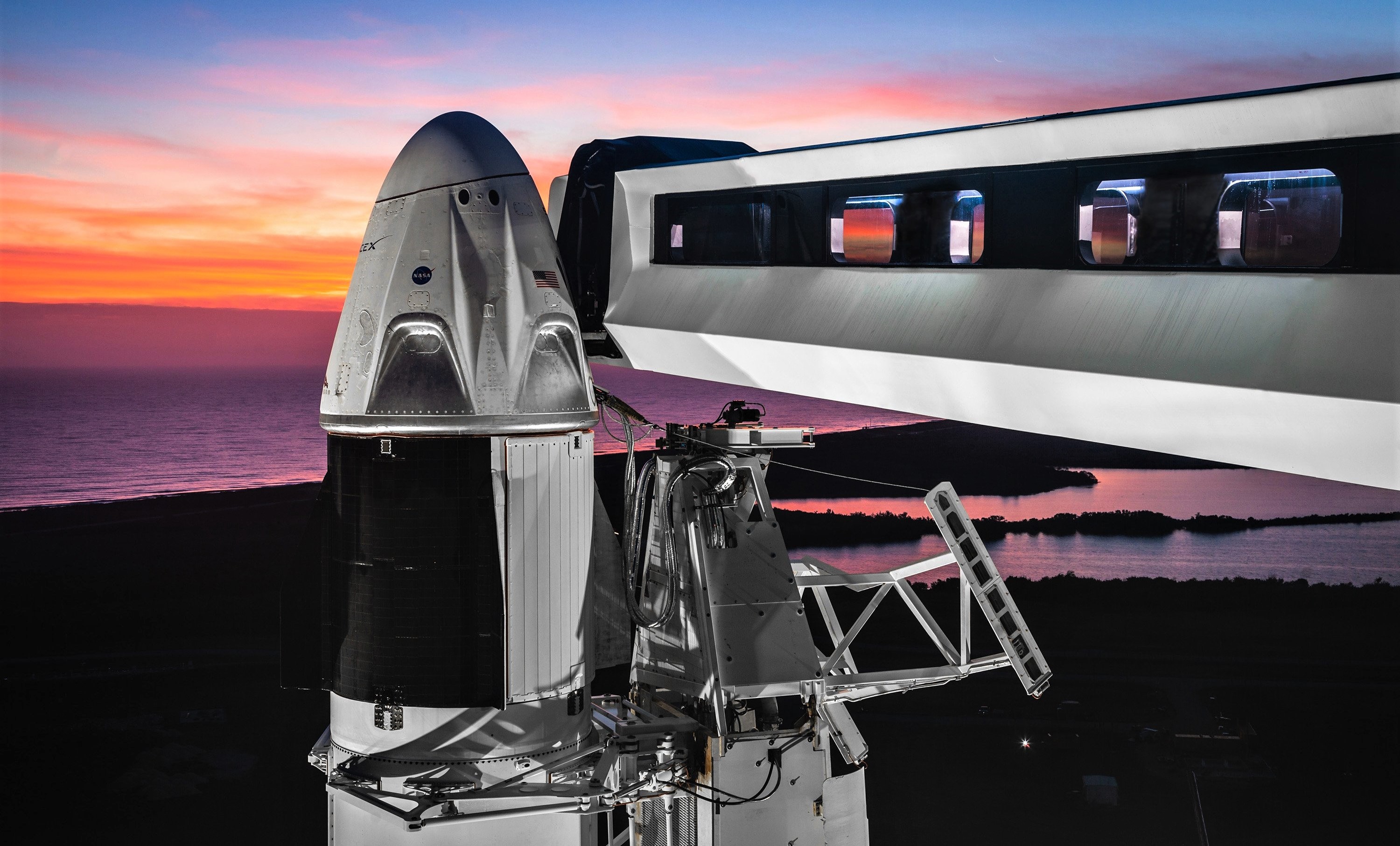

SpaceX
NASA and SpaceX will determine fate of Crew Dragon launch debut this Friday
Although the chances of additional delays are high, the orbital launch debut of SpaceX’s Crew Dragon spacecraft remains stoically targeted for 2:47 am EDT (07:47 UTC) on March 2nd, less than ten days from today.
Known as DM-1, the unproven SpaceX vehicle’s autonomous demonstration mission is a critical milestone along the road to assured US access to the International Space Station (ISS), without which NASA will be forced to continue procuring seats on Russian Soyuz missions with aggressively inflated price tags. If everything goes exactly as planned, a successful DM-1 could translate into the company’s first crewed launch as early as July 2019.
Targeting March 2 for Crew Dragon's first flight to the @Space_Station https://t.co/oJRtDhV3aL pic.twitter.com/lLw1FJHLvI
— SpaceX (@SpaceX) February 6, 2019
Following a nominal mission plan, the first spaceworthy Crew Dragon will dock with the ISS a little over 24 hours after launch (March 3rd) with around 180 kg (400 lb) of cargo for the station’s six-astronaut crew. Five days later (March 8th), Crew Dragon will depart from the ISS, detach its expendable trunk, and reenter Earth’s atmosphere for a soft landing in the Atlantic Ocean. Throughout these operations, ISS astronauts, NASA technicians and operators, and a range of SpaceX employees will conduct extensive observations and tests of the new spacecraft’s performance during all mission phases, ranging from on-orbit docking (a new technology for SpaceX) to Atlantic Ocean recovery operations.
Once the capsule has been extricated from the ocean, SpaceX’s spacecraft refurbishment technicians will be faced with an extraordinary challenge, upon which the date of Crew Dragon’s first crewed launch will directly hinge. Assuming splashdown ops are nominal and Dragon is returned safely to Florida, it’s safe to assume that SpaceX will transport the spacecraft to its Hawthorne factory, at which point its engineers and technicians will have roughly two months to prepare it for another launch. Known as an in-flight abort (IFA) test, SpaceX specifically opted to perform the spacecraft safety check despite the fact that NASA did not explicitly require its commercial providers (Boeing and SpaceX) to do so. SpaceX completed Crew Dragon’s pad abort test – required by NASA – almost four years ago, while Boeing will not perform an in-flight abort before launching astronauts and has its pad abort scheduled no earlier than (NET) May 2019.
- Falcon 9 B1051 has spent several months testing at SpaceX’s McGregor, Texas facilities in preparation for DM-1. (SpaceX)
- The first orbit-ready Crew Dragon spacecraft stands beside its human-rated Falcon 9, December 2018. (SpaceX)
- Crew Dragon shows off its conformal (i.e. curved) solar array while connected to SpaceX’s sleek Crew Access Arm (CAA). (SpaceX)
- SpaceX completed a successful static fire of the first Falcon 9 rated for human flight on January 24th. (SpaceX)
SpaceX’s IFA test is designed to verify that Crew Dragon is capable of safely extricating its astronaut passengers from a failing rocket at the point of peak aerodynamic (and thus mechanical) stress during launch, known as Max Q. Combined with a pad abort demonstration, where the above situation is replicated but with the rocket and spacecraft motionless on the launch pad, the engineering assumption is that successful aborts at both standstill and Max Q verify that a given spacecraft has proven that it can essentially abort and carry astronauts to safety at any point during launch.
“The launch scenario where an abort is initiated during the ascent trajectory at the maximum dynamic pressure (known as max Q) is a design driver for the launch abort system. It dictates the highest thrust and minimum relative acceleration required between Falcon 9 and the aborting Dragon … Dragon would separate from Falcon 9 at the interface between the trunk and the second stage… Under these conditions, the Falcon 9 vehicle would become uncontrollable and would break apart.” – SpaceX FAA permit, 2018
Aside from a boilerplate Merlin Vacuum engine on the second stage, SpaceX’s IFA test is set to fly on real Falcon 9 hardware that will almost certainly be consigned to total destruction at the point of abort, around 90 seconds after launch. SpaceX’s decision to expend an entirely flightworthy Falcon 9 Block 5 rocket – featuring a booster capable of supporting anywhere from 5-100 lifetime missions – is a tangible demonstration of the company’s commitment to crew safety above all else, although NASA will either partially or fully compensate SpaceX for the milestone. Set to occur no earlier than June 2019, the IFA schedule is explicitly constrained by the successful launch and recovery of Crew Dragon after DM-1 – any delays to that mission will likely translate into IFA delays, which will translate into delays for the first crewed mission (DM-2).

SpaceX’s Cargo Dragon engineers and technicians have a solid amount of experience refurbishing the spacecraft for cargo missions to the ISS, although the average turnaround for flight-proven capsules currently stands around 18-24 months, not exactly on the heels of the 2-3 months currently alotted for the first Crew Dragon. Thanks to the fact that the IFA Crew Dragon does not need to be refurbished to the standards of orbital flight for its second launch, it’s at least conceivable that that aspirational schedule is within reach. SpaceX’s first crewed demonstration mission (DM-2) could occur as early as one month after a successful IFA (July 2019), pending the completion of joint NASA-SpaceX readiness reviews.
Known as flight readiness reviews (FRRs), those joint reviews are no less significant for DM-1, even if they likely are underwhelmingly marked by a copious amount of slideshow presentations and sitting around tables in meeting rooms. The purpose of the reviews (at least nominally) is to essentially have SpaceX attempt to convince NASA (as empirically as possible) that they are ready to launch Crew Dragon. According to NASA, that review will end NET 6pm EDT (23:00 UTC) on February 22nd, followed one hour later by an official press conference featuring NASA and SpaceX officials.
Check out Teslarati’s newsletters for prompt updates, on-the-ground perspectives, and unique glimpses of SpaceX’s rocket launch and recovery processes!
News
SpaceX launches Ax-4 mission to the ISS with international crew
The SpaceX Falcon 9 launched Axiom’s Ax-4 mission to ISS. Ax-4 crew will conduct 60+ science experiments during a 14-day stay on the ISS.
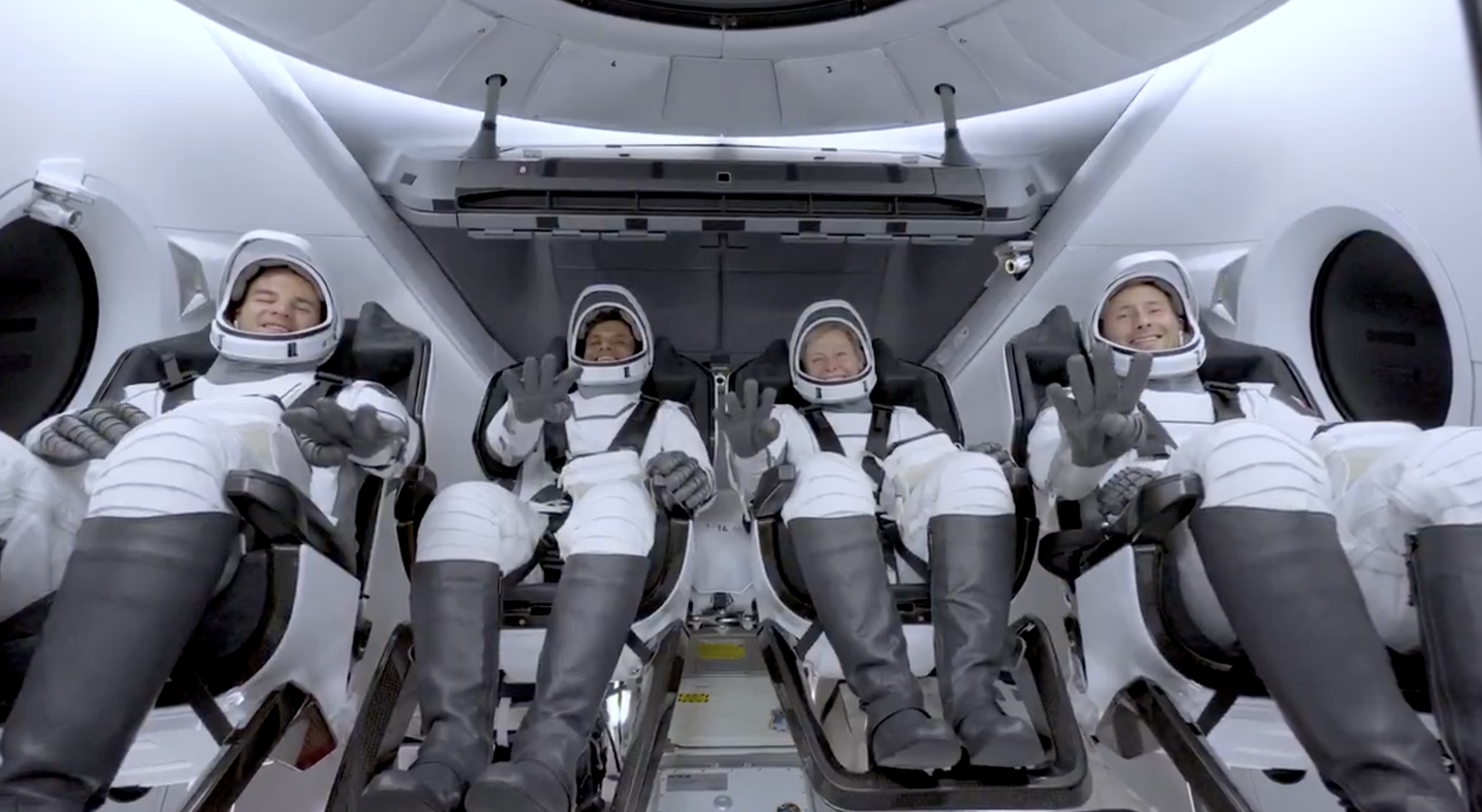
SpaceX launched the Falcon 9 rocket kickstarting Axiom Space’s Ax-4 mission to the International Space Station (ISS). Axiom’s Ax-4 mission is led by a historic international crew and lifted off from Kennedy Space Center’s Launch Complex 39A at 2:31 a.m. ET on June 25, 2025.
The Ax-4 crew is set to dock with the ISS around 7 a.m. ET on Thursday, June 26, 2025. Axiom Space, a Houston-based commercial space company, coordinated the mission with SpaceX for transportation and NASA for ISS access, with support from the European Space Agency and the astronauts’ governments.
The Ax-4 mission marks a milestone in global space collaboration. The Ax-4 crew, commanded by U.S. astronaut Peggy Whitson, includes Shubhanshu Shukla from India as the pilot, alongside mission specialists Sławosz Uznański-Wiśniewski from Poland and Tibor Kapu from Hungary.
“The trip marks the return to human spaceflight for those countries — their first government-sponsored flights in more than 40 years,” Axiom noted.
Shukla’s participation aligns with India’s Gaganyaan program planned for 2027. He is the first Indian astronaut to visit the ISS since Rakesh Sharma in 1984.
Axiom’s Ax-4 mission marks SpaceX’s 18th human spaceflight. The mission employs a Crew Dragon capsule atop a Falcon 9 rocket, designed with a launch escape system and “two-fault tolerant” for enhanced safety. The Axiom mission faced a few delays due to weather, a Falcon 9 leak, and an ISS Zvezda module leak investigation by NASA and Roscosmos before the recent successful launch.
As the crew prepares to execute its scientific objectives, SpaceX’s Ax-4 mission paves the way for a new era of inclusive space research, inspiring future generations and solidifying collaborative ties in the cosmos. During the Ax-4 crew’s 14-day stay in the ISS, the astronauts will conduct nearly 60 experiments.
“We’ll be conducting research that spans biology, material, and physical sciences as well as technology demonstrations,” said Whitson. “We’ll also be engaging with students around the world, sharing our experience and inspiring the next generation of explorers.”
SpaceX’s Ax-4 mission highlights Axiom’s role in advancing commercial spaceflight and fostering international partnerships. The mission strengthens global space exploration efforts by enabling historic spaceflight returns for India, Poland, and Hungary.
News
Starlink Cellular’s T-Mobile service to grow with third-party app data
From Oct 2025, T-Satellite will enable third-party apps in dead zones! WhatsApp, X, AccuWeather + more coming soon.
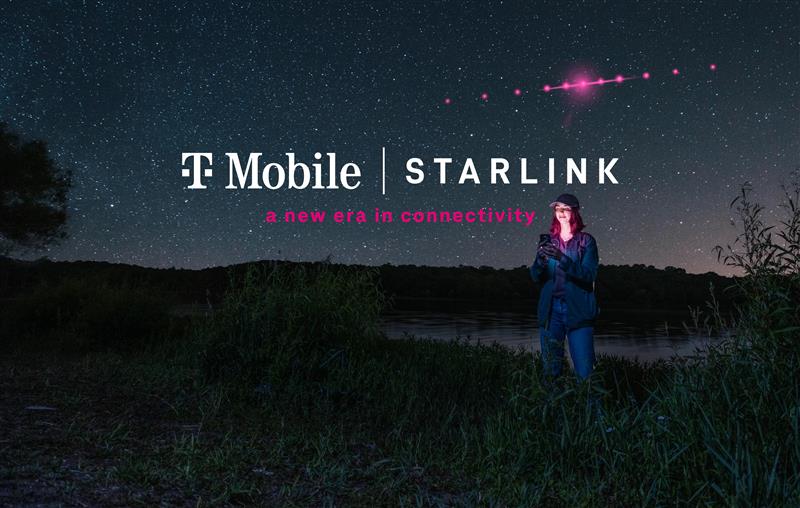
Starlink Cellular’s T-Mobile service will expand with third-party app data support starting in October, enhancing connectivity in cellular dead zones.
T-Mobile’s T-Satellite, supported by Starlink, launches officially on July 23. Following its launch, T-Mobile’s Starlink Cellular service will enable data access for third-party apps like WhatsApp, X, Google, Apple, AccuWeather, and AllTrails on October 1, 2025.
T-Mobile’s Starlink Cellular is currently in free beta. T-Satellite will add MMS support for Android phones on July 23, with iPhone support to follow. MMS support allows users to send images and audio clips alongside texts. By October, T-Mobile will extend emergency texting to all mobile users with compatible phones, beyond just T-Mobile customers, building on its existing 911 texting capability. The carrier also provides developer tools to help app makers integrate their software with T-Satellite’s data service, with plans to grow the supported app list.
T-Mobile announced these updates during an event celebrating an Ookla award naming it the best U.S. phone network, a remarkable turnaround from its last-place ranking a decade ago.
“We not only dream about going from worst to best, we actually do it. We’re a good two years ahead of Verizon and AT&T, and I believe that lead is going to grow,” said T-Mobile’s Chief Operating Officer Srini Gopalan.
T-Mobile unveiled two promotions for its Starlink Cellular services to attract new subscribers. A free DoorDash DashPass membership, valued at $10/month, will be included with popular plans like Experience Beyond and Experience More, offering reduced delivery and service fees. Meanwhile, the Easy Upgrade promotion targets Verizon customers by paying off their phone balances and providing flagship devices like the iPhone 16, Galaxy S25, or Pixel 9.
T-Mobile’s collaboration with SpaceX’s Starlink Cellular leverages orbiting satellites to deliver connectivity where traditional networks fail, particularly in remote areas. Supporting third-party apps underscores T-Mobile’s commitment to enhancing user experiences through innovative partnerships. As T-Satellite’s capabilities grow, including broader app integration and emergency access, T-Mobile is poised to strengthen its lead in the U.S. wireless market.
By combining Starlink’s satellite technology with strategic promotions, T-Mobile is redefining mobile connectivity. The upcoming third-party app data support and official T-Satellite launch mark a significant step toward seamless communication, positioning T-Mobile as a trailblazer in next-generation wireless services.
News
Starlink expansion into Vietnam targets the healthcare sector
Starlink aims to deliver reliable internet to Vietnam’s remote clinics, enabling telehealth and data sharing.

SpaceX’s Starlink expansion into Vietnam targets its healthcare sector. Through Starlink, SpaceX seeks to drive digital transformation in Vietnam.
On June 18, a SpaceX delegation met with Vietnam’s Ministry of Health (MoH) in Hanoi. SpaceX’s delegation was led by Andrew Matlock, Director of Enterprise Sales, and the discussions focused on enhancing connectivity for hospitals and clinics in Vietnam’s remote areas.
Deputy Minister of Health (MoH) Tran Van Thuan emphasized collaboration between SpaceX and Vietnam. Tran stated: “SpaceX should cooperate with the MoH to ensure all hospitals and clinics in remote areas are connected to the StarLink satellite system and share information, plans, and the issues discussed by members of the MoH. The ministry is also ready to provide information and send staff to work with the corporation.”
The MoH assigned its Department of Science, Technology, and Training to work with SpaceX. Starlink Vietnam will also receive support from Vietnam’s Department of International Cooperation. Starlink Vietnam’s agenda includes improving internet connectivity for remote healthcare facilities, developing digital infrastructure for health examinations and remote consultations, and enhancing operational systems.
Vietnam’s health sector is prioritizing IT and digital transformation, focusing on electronic health records, data centers, and remote medical services. However, challenges persist in deploying IT solutions in remote regions, prompting Vietnam to seek partnerships like SpaceX’s.
SpaceX’s Starlink has a proven track record in healthcare. In Rwanda, its services supported 40 health centers, earning praise for improving operations. Similarly, Starlink enabled remote consultations at the UAE’s Emirati field hospital in Gaza, streamlining communication for complex medical cases. These successes highlight Starlink’s potential to transform Vietnam’s healthcare landscape.
On May 20, SpaceX met with Vietnam’s Ministry of Industry and Trade, announcing a $1.5 billion investment to provide broadband internet, particularly in remote, border, and island areas. The first phase includes building 10-15 ground stations across the country. This infrastructure will support Starlink’s healthcare initiatives by ensuring reliable connectivity.
Starlink’s expansion in Vietnam aligns with the country’s push for digital transformation, as outlined by the MoH. By leveraging its satellite internet expertise, SpaceX aims to bridge connectivity gaps, enabling advanced healthcare services in underserved regions. This collaboration could redefine Vietnam’s healthcare infrastructure, positioning Starlink as a key player in the nation’s digital future.
-

 Elon Musk1 day ago
Elon Musk1 day agoTesla investors will be shocked by Jim Cramer’s latest assessment
-

 News6 days ago
News6 days agoTesla Robotaxi’s biggest challenge seems to be this one thing
-

 News2 weeks ago
News2 weeks agoTesla’s Grok integration will be more realistic with this cool feature
-

 Elon Musk2 weeks ago
Elon Musk2 weeks agoElon Musk slams Bloomberg’s shocking xAI cash burn claims
-

 News2 weeks ago
News2 weeks agoTesla China roars back with highest vehicle registrations this Q2 so far
-

 News2 weeks ago
News2 weeks agoTexas lawmakers urge Tesla to delay Austin robotaxi launch to September
-

 News2 weeks ago
News2 weeks agoTesla dominates Cars.com’s Made in America Index with clean sweep
-

 Elon Musk1 week ago
Elon Musk1 week agoFirst Look at Tesla’s Robotaxi App: features, design, and more

